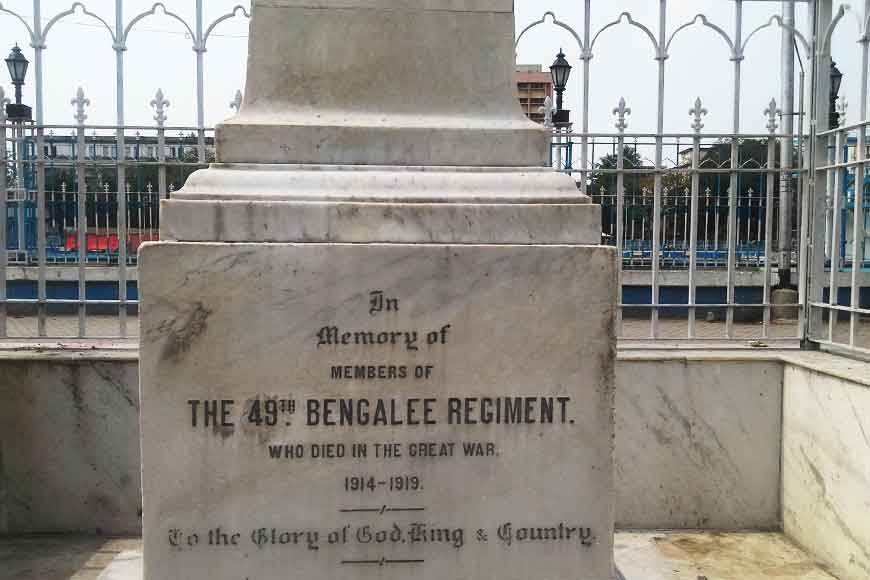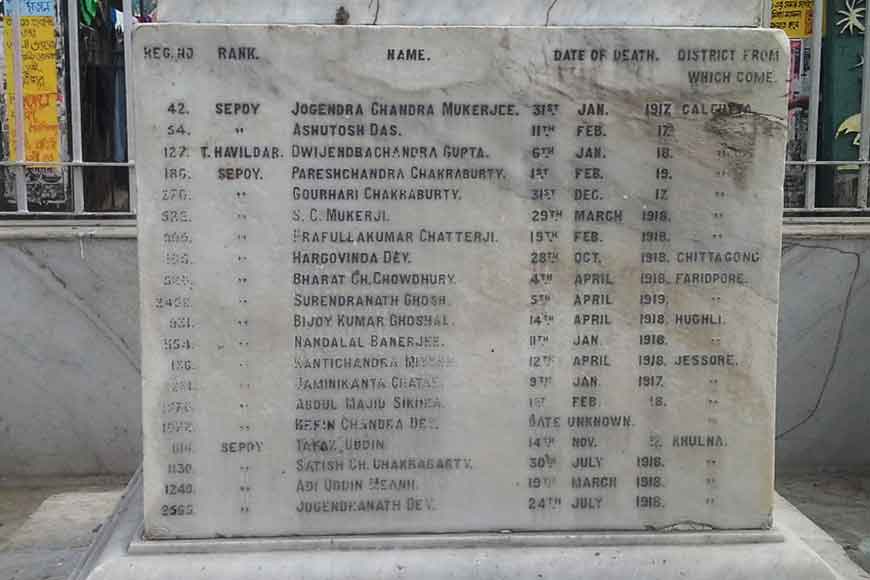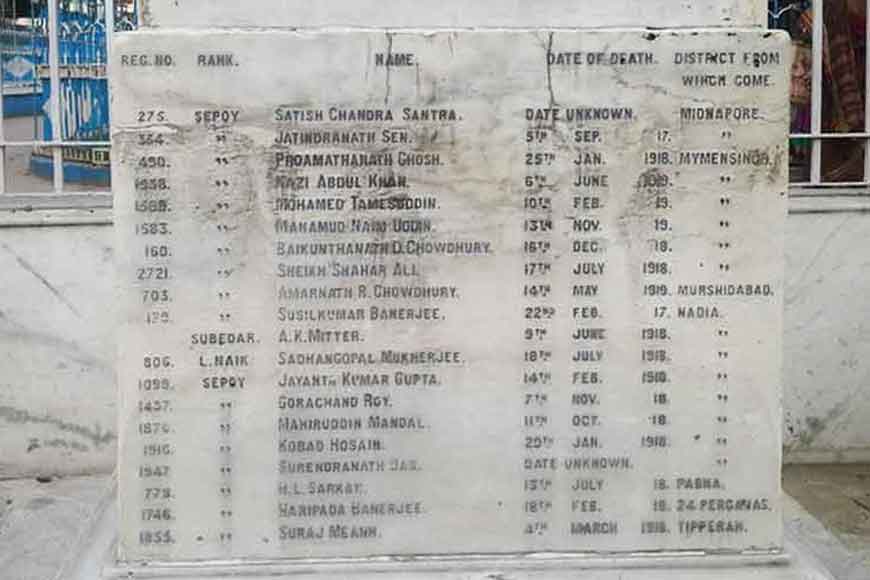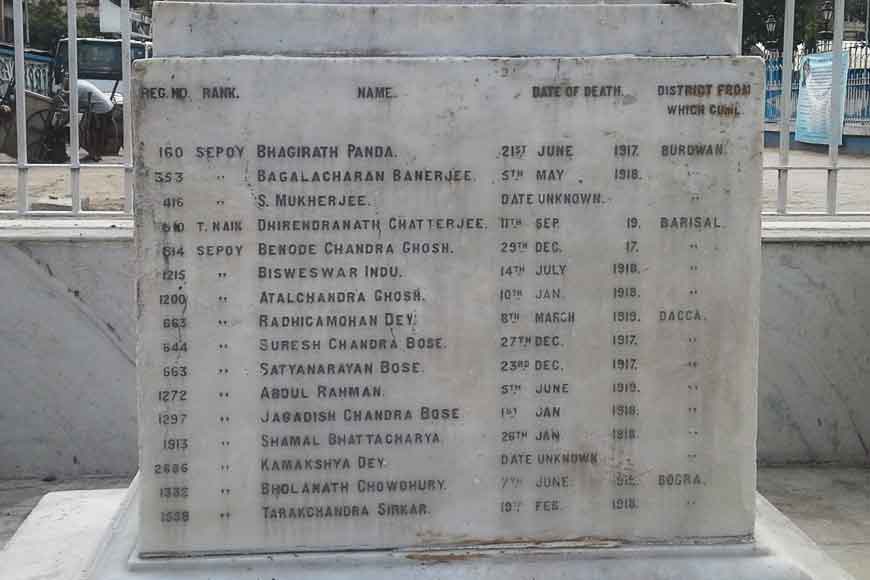Bengalis who fought in World War I and the first ‘only Bengali’ British regiment

The month of August has special significance for Indians, especially Bengalis. In August 1924, a monument was built in memory of the first Bengali Regiment to honour the 56 soldiers who laid down their lives in World War I (1914 -1919). A commemorative statue was erected at College Square, opposite the main campus of the Calcutta University. The names, ranks (sepoy, subedar, lance naik), regiment number, date of death and districts from which they hailed are listed at the 95-year-old pedestal. The narrow structure with Islamic arches and marble pedestal has a touch of elegance and charm about it. However, much of the time it is obscured by posters or by clothes hung for drying.

Great Britain was a leading Allied Power during World War I, fighting against the powers like Germany. But the British Army was small in size, compared to other major European powers. It comprised largely of urban English and youth volunteers. The British and Allied Forces had to face huge losses of men during the Battle of the Somme in 1916. A million men on both sides died or were wounded or captured during 141 days in 1916. Britain struggled to cope with the demand for manpower after the loss and the government went on an aggressive recruiting drive. Significant sacrifices were called for in the name of defeating the Empire’s enemies.
Lord Carmichael, the Governor of the Legislative Council of Bengal, announced to form a Bengali Army platoon and accordingly a Bengali Regiment Committee was formed to extend cooperation to the government in recruiting soldiers. The committee ran campaigns through public meetings, newspaper publicity and other means to enthuse people of Bengal to join the Army. The government also earnestly solicited their cooperation.

As a result of this recruitment drive, a Double Company with men from Bengal was formed as part of the British Armed Forces. Later this Double Company was renamed as the 49th Bengali Regiment. This Regiment was the only army unit to be composed entirely of ethnic Bengalis. This Bengali Battalion was not like an ordinary army unit. Basically, young men from educated middle-class families were enlisted as soldiers. Many had already been employed elsewhere and were drawing good salaries before joining the army. Some were even graduates and post-graduates or with law degrees. Enthusiastic scions of nawabs and zamindars also joined the Bengali Battalion and they included the Nawab of Dhaka, Khwaja Habibullah Bahadur, Kumar Adhikram Mazumdar and Mohitkumar Munshi. Commoners like Ranadaprasad Saha, Nityagopal Bhattacharya, poet Kazi Nazrul Islam, Manbahadur Sinha and renowned Jatra actor, Surendranath Mukhopadhyay also joined the army out of lofty idealism and to answer the call of duty.

The Bengal Regiment was trained in Karachi. The first battalion was divided into three groups and in 1917 they were sent to take part in the Mesopotemian War in Baghdad. But once there, a good number of soldiers became sick and some of them died. After this, the rest of the soldiers were transferred to the city of Azizia and Al Kut. Still, there was no significant improvement in their health as the Bengalis were not used to that difficult terrain and harsh climate. The Bengalis performed mainly security duties alongside receiving military training.
By November 1918 armistice was declared. At Tanuma the Bengalis stayed back to participate in the post-war rehabilitation duties. As many as 235 Bengali soldiers were engaged in Baghdad to suppress the Kurdish rebellion in 1919. As many as 235 Bengalis were engaged in suppressing this rebellion. However, after coming back to Kolkata in August 1920, the Bengali Battalion was disbanded.
The Bengali Regiment was the first modern battle regiment made up of only Bengalis. The British government had recruited around six thousand soldiers in the platoon. Each company had 228 soldiers and 56 soldiers were martyred in the war. Young men from different parts of undivided Bengal including Burdwan, Barishal, Dhaka, Midnapore, Murshidabad, Nadia, Khulna and Jessore had joined the Bengali Regiment. The Indian Armed Forces have not forgotten these unsung heroes and every year, a special programme is held at Fort William to pay homage to these brave soldiers. But World War I seems to be part of a distant past for most Bengalis and it is a pity that many of us aren’t even aware of Bengali participation in the First World War.










